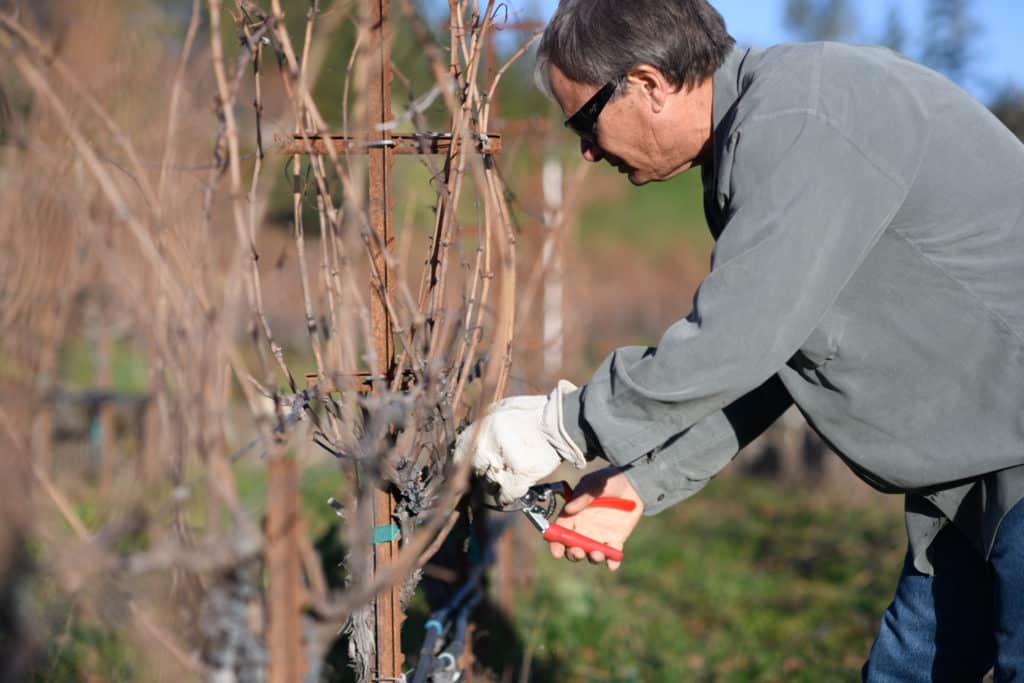
Farming techniques for vineyards
When it comes to vineyards, and most farming, previous seasons can affect the next. It is important for farmers to interpret the uncontrollable, Mother Nature, to then know when and how to react for a successful season. The key to farming is that it is all about patience & timing.
As most know, farmers never really rest! At Neal Family Vineyards, after harvest, we apply organic compost that comes from the land and plant cover crop (legumes, sweet peas, and other nitrogen fixing plants) as soil builders. After that, we move right into pruning.
What most do not know is that pruning can make or break the quantity and quality of the fruit for the upcoming year. As vines are planted, farmers have to make many decisions of how the vines are trellised and shaped based on soil type, grade, climate, grape variety, water availability, sun exposure, and more. Mark Neal has pruned numerous vineyards since he was a kid and since has always recognized that pruning vines, like any other tree or plant, is like sculpting an art piece. Each vine is different and one must determine how many and which best canes to leave to create the highest quality fruit for wines.
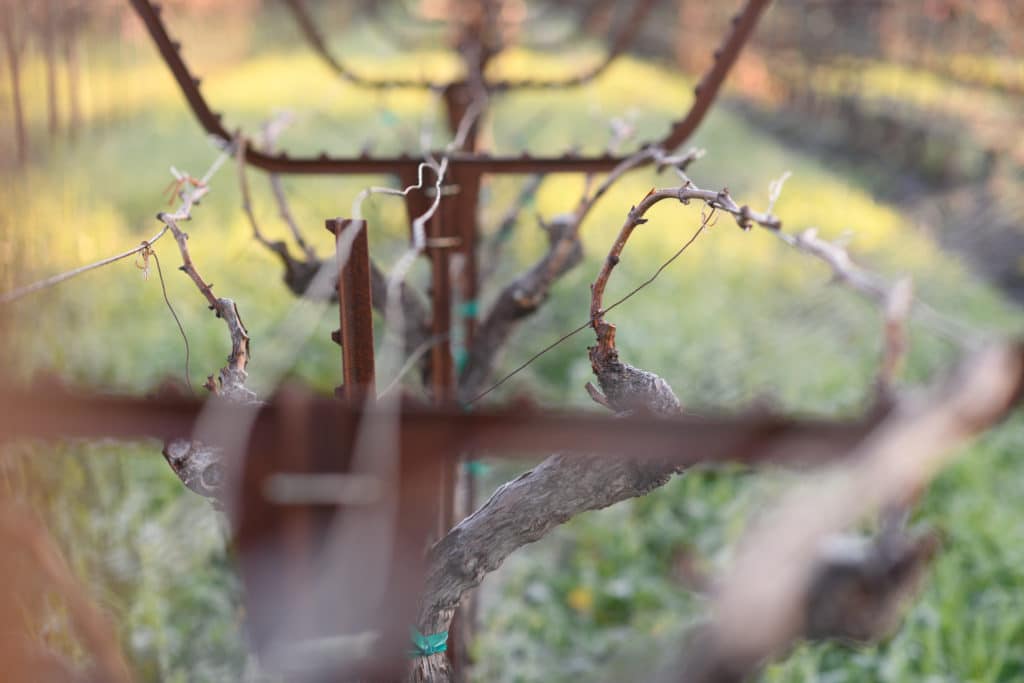
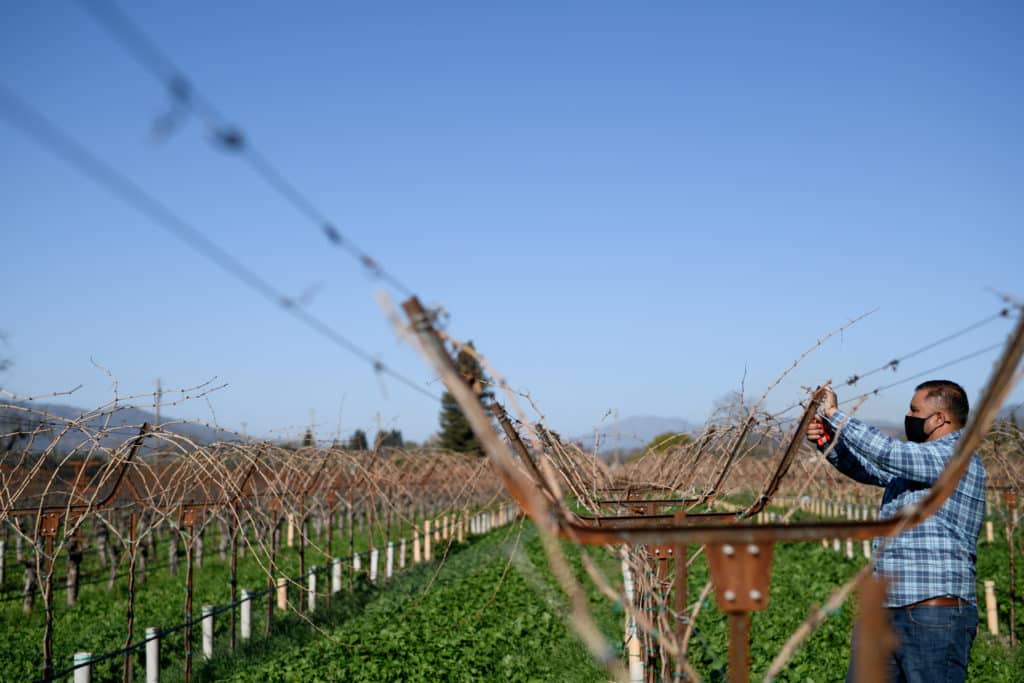
On our Rutherford property, Mark trellised his Zinfandel and Cabernet Sauvignon vines on “Elk horn” rebarbs – the Y shaped bar in the photos above- to train the vines to grow a leaf canopy that spreads wide and out. The best and healthy canes are tied to the wire and throughout the year will need to be maintained to be shaped this way. More importantly, this kind of training allows the fruit to grow underneath the canopy, preventing excess sun exposure that can cause sunburn on the grapes as they swell and ripen (May-October). Also soils in some areas of Rutherford can be rich due to more nutrient dense and higher water holding capacity soils. This is an important reason why this trellising system works best here.
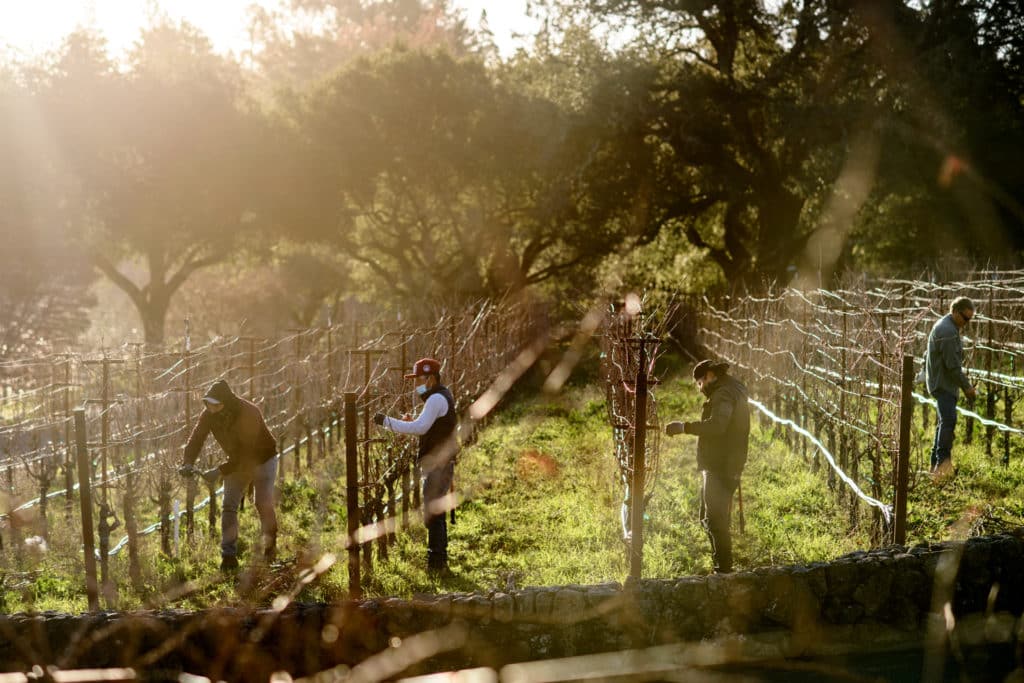
Meanwhile, our Howell Mountain vines are trained, as what is most commonly seen in the valley, through Vertical Shoot Positioning (VSP). VSP is where the shoots are trained upward and narrow. With the cooler climate up in the mountains, there is also increased sun exposure. This trellising system is the optimal solution to best maximize light for these vines that are also less vigorous in the mountains (less nutrient dense and lower water holding capacity soils). The same philosophy of pruning and determining the healthiest canes is applied at Howell Mountain as well.
In the Vineyards…
Mark Neal gave son Jackson (3rd generation) a Masterclass in cane pruning at our Howell Mountain Estate Vineyard. Mark continues to prune his Howell Mountain Estate vineyard and surrounding trees as well.
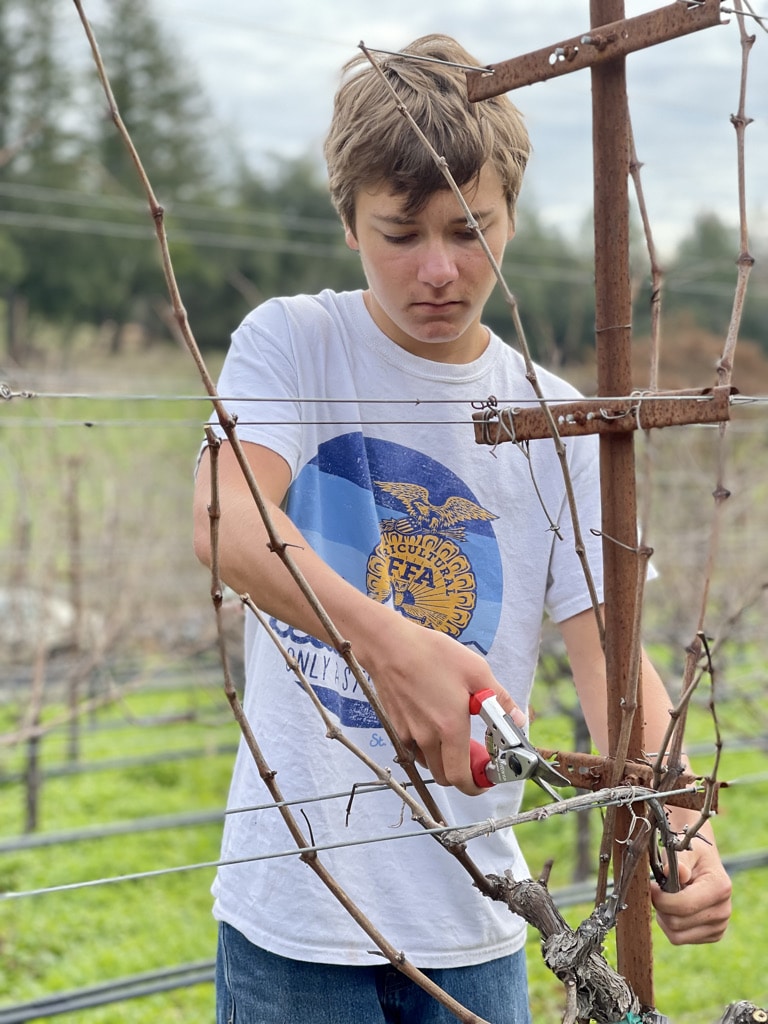
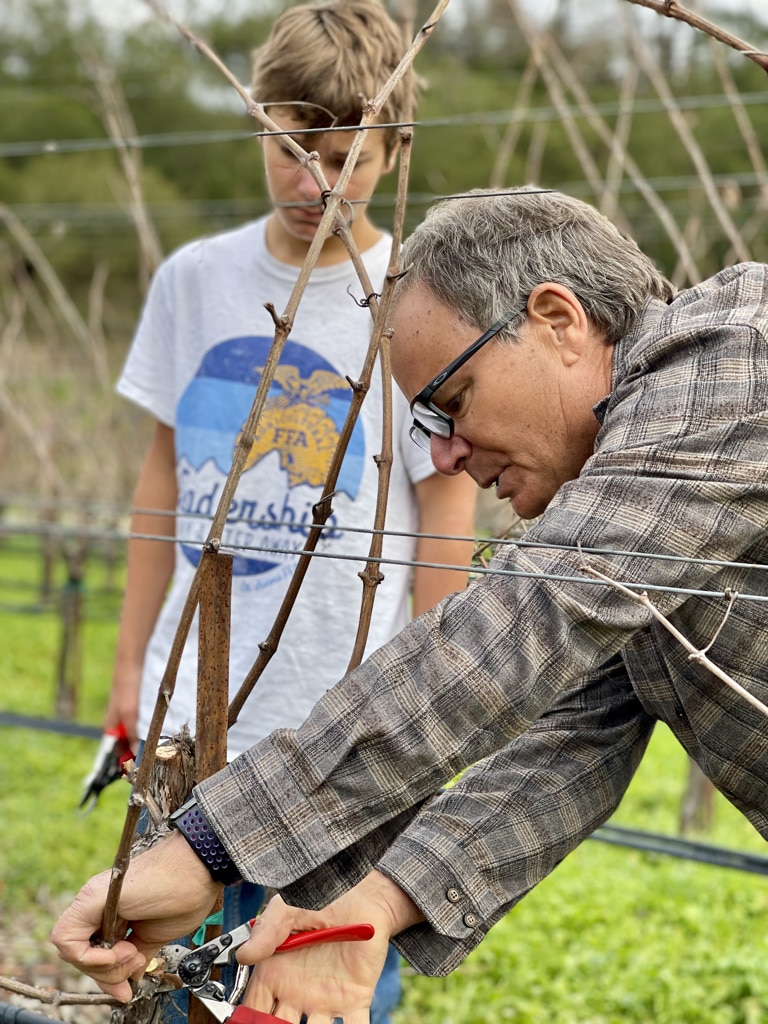
Jackson will be participating in the St. Helena High School FFA (Future Farmers of America) program’s vine pruning team competition later in the year. Given the great skill required to correctly prune vines, Jackson embraces the afternoon learning from the best! Our family’s deep organic farming roots started in Napa Valley with Mark’s dad, Jack Neal, in the 1960s when he started his own Vineyard Management company. Mark has significantly grown the business of Jack Neal & Son (JNS) over the last 30 years. Jack Neal & Son organically farms thousands of acres in Napa Valley, tending the vines for many of the most prestigious wineries in the area. Our family continues our legacy of being true stewards of the land with the 3rd generation and beyond.
